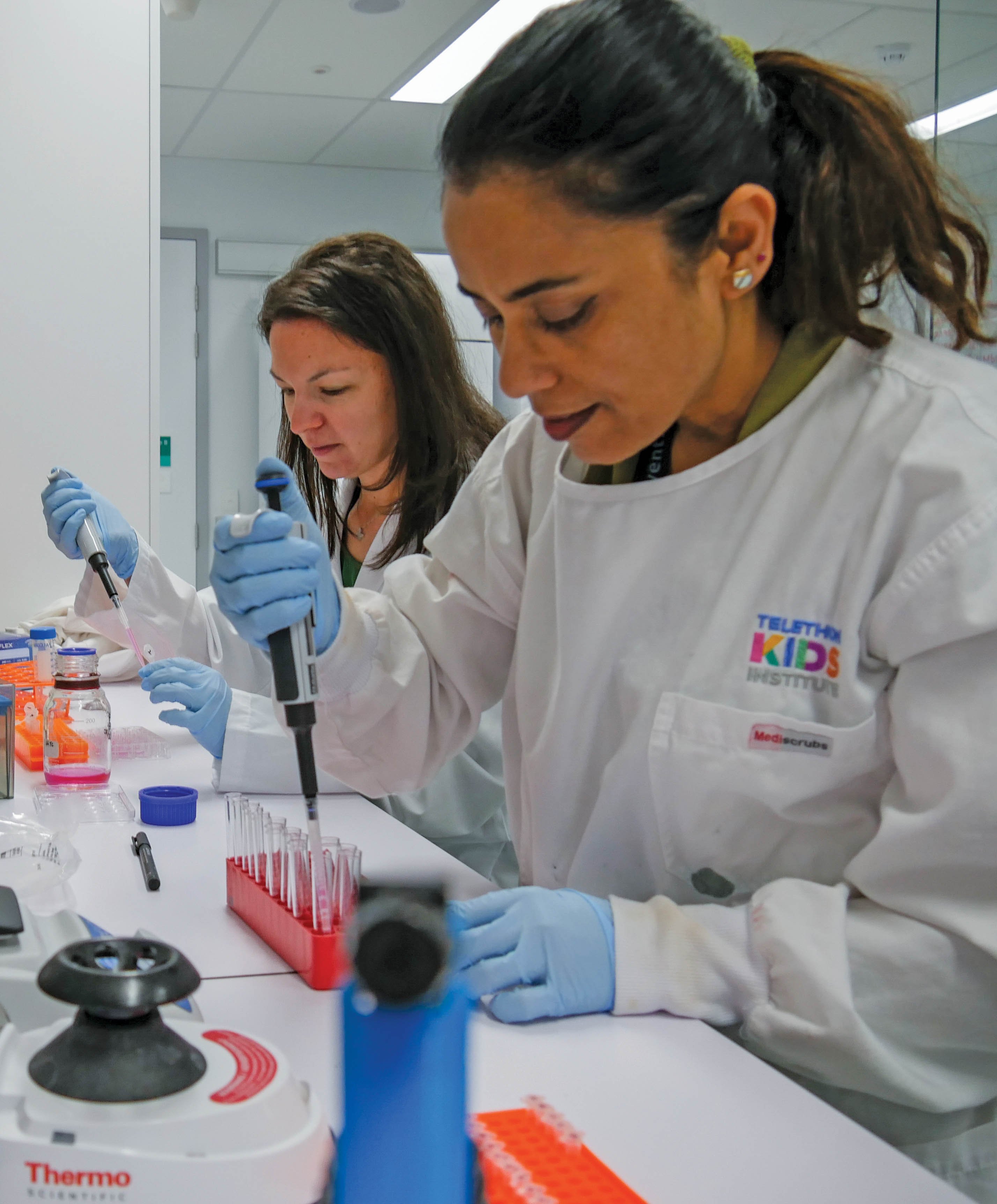 The WA Kids Cancer Centre is at the cutting edge of developing new, safer ways of treating children with cancer using their own immune systems.
The WA Kids Cancer Centre is at the cutting edge of developing new, safer ways of treating children with cancer using their own immune systems.
Led by Professor Terrance Johns, the Centre has become the first in Australia to work on developing new immunotherapy treatments for paediatric cancers – and the research is so promising it is now underpinning a significant amount of the Centre’s work.
For decades, surgery, radiation therapy and chemotherapy have been the main weapons in the fight against childhood cancer. But while they can be efficient at killing cancer cells, toxic radiation therapy and chemotherapy treatments take their toll on little bodies – often leading to lifelong impairments or even secondary cancers that could ultimately take the child’s life.
Now a new contender is in the ring to fight childhood cancer: immunotherapy. Its potential is so exciting, it has driven a conscious shift in focus for the WA Kids Cancer Centre. From sarcoma and leukaemia to adolescent melanoma and brain cancer – almost every research group is working to find new treatments that harness the immune system to fight cancer.
It’s really exciting to think that this centre-wide focus could lead to the next major breakthrough in immunotherapy
- Professor Johns
Immunotherapy, which involves ‘supercharging’ the body’s own immune cells to fight the cancer, has been used to successfully treat some adult cancers but has had less success in children, especially in solid tumours.
“I think one of the main reasons why is we simply don’t know enough about children’s immune systems in the context of cancer,” Professor Johns said.
“We don’t know how the immune system interacts with cancer in children and how that may be different to adults – and most of the current immunotherapy treatments have been developed in adults.”
For Dr Bree Foley, Senior Research Officer in the WA Kids Cancer Immunotherapy Team, unlocking the mysteries of the immune system is all in a day’s work.
“Cancer is really clever and it finds many ways to evade the immune system – it hijacks the normal processes,” Dr Foley said.
“What we’re trying to do is basically get the immune system to start doing its job again. How can we boost it? What kind of weapons or extra ammunition can we give to the immune cells to really kick-start them and basically get them to do their job?”
The answers might be nearer than you expect.




